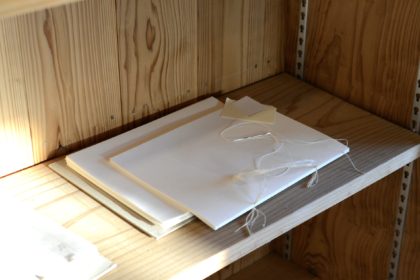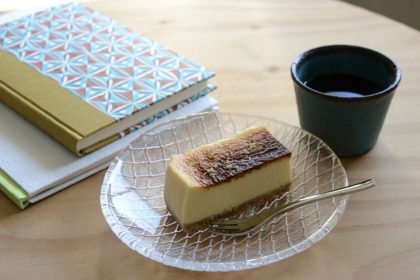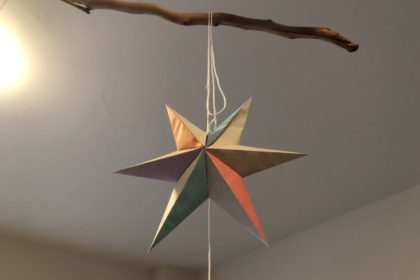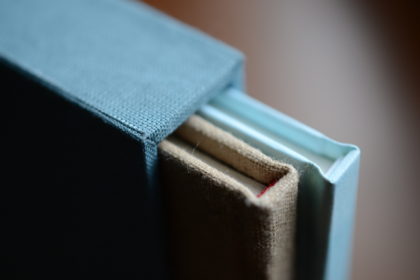Bookbinding in the tea room
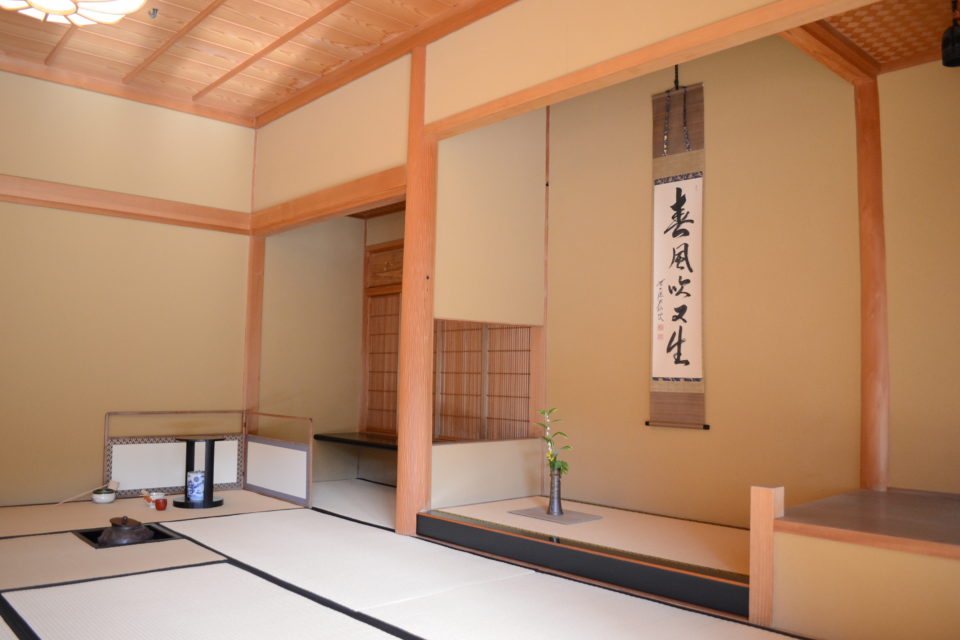
Tea ceremony tools are on display.
こちらは福岡県の“芦屋釜の里”の茶室。
茶道具が展示されています。
I went to “Ashiyagama no Sato” in Onga-gun, Fukuoka prefecture.
To see an independent exhibition of an imoji.
An “imoji” is a craftsman who casts with molten iron.
“Ashiyagama no Sato is studying and making kettles used in the tea ceremony and temple bells.
福岡県遠賀郡にある “芦屋釜の里” へ行ってきました。
ある鋳物師(いもじ)の独立展を観るためにです。
鋳物師とは溶かした鉄で鋳造する職人のことです。
芦屋釜の里では茶釜や梵鐘を作ったり、研究したりしています。
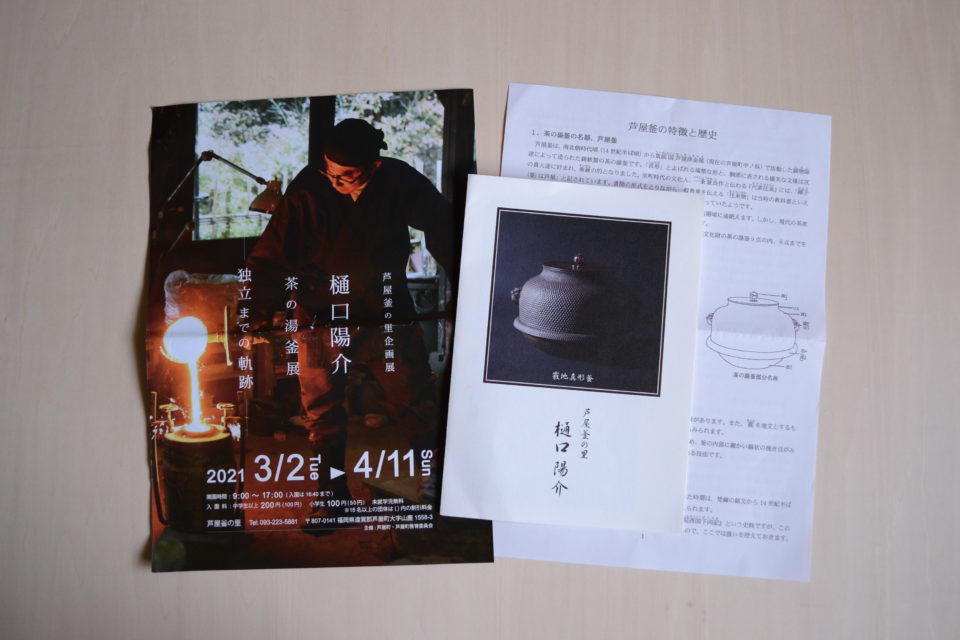
He will independent this spring.
鋳物師の樋口陽介氏。この春に独立されます。
I’d really like to tell about Ashiyagama teakettles, but I don’t have enough knowledge yet.
I will tell you after studying more about it.
This time, I will tell about “hyougu”, Hanging scrolls, folding screens, sliding doors, etc.
芦屋釜についてお話ししたいのはやまやまなのですが、まだ知識が足りません。
もっと学んでからお伝えしたいと思います。
今回は、“表具”、つまり掛軸、屏風、襖についてです。
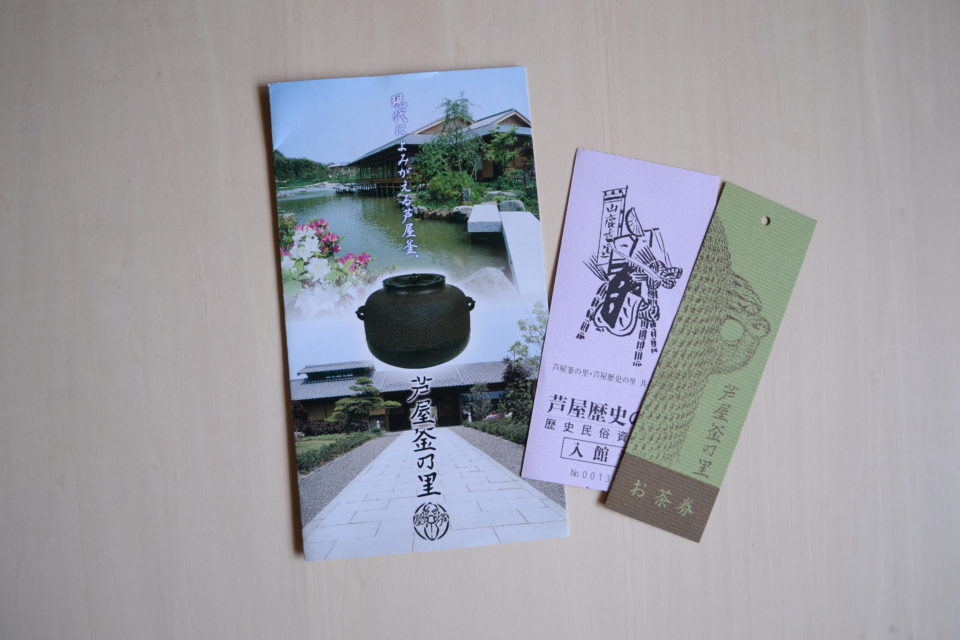
“The Ashiyagama originated in this town and was greatly renowned for its excellence as a utensil for the tea ceremony.
The aim of Ashiyagama no Sato is to preserve its history,
promote the revival of the Ashiyagama and tea culture and provide a peaceful environment and gathering place.”
You can drink matcha here. The History Museum is across the street.
I had no time, I couldn’t drink tea and to see history museum. I will visit again.
パンフレットからの引用です。
“芦屋釜はこの地で育まれ茶の湯 釜の名品として名を馳せました。
当園は、その歴史にふれ、芦屋釜の復興や茶の湯文化の振興をはかるとともに、
多くの人々が集うやすらぎの場所となることをめざしています。”
ここでは抹茶がいただけます。通りの向かいは歴史民俗資料館です。
私は時間が足りず、抹茶はいただけなかったし、歴史民俗資料館も見れず。また行こうと思います。
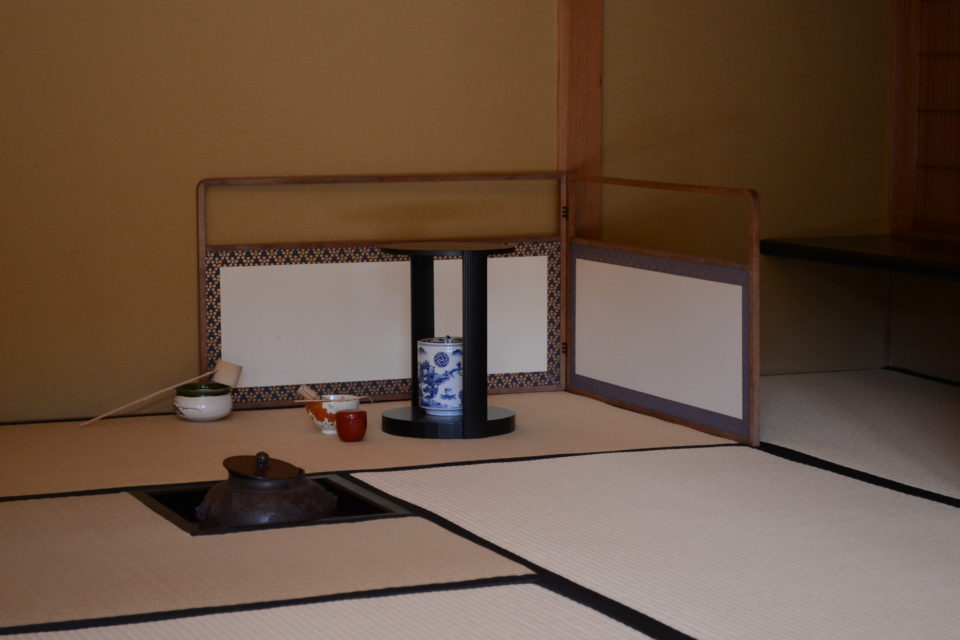
It’s placed behind the tea ceremony tools.
これが風炉先屏風です。
茶道具の後ろに置かれています。
At one time, there was not a bookbinder as Europe in Japan.
Instead of the bookbinder, there is the “hyougusi”.
The hyougusi is a professional in paper and glue.
Actually, I am weak in paste work.
That is why, I’m interested in paste(glue) work.
Then I arrived at the hyougusi.
かつて、日本にはヨーロッパのような製本職人はいませんでした。
製本職人の代わりに、表具師がいます。
表具師は紙と糊の専門家です。
実をいうと、私は糊付け作業が苦手なのです。
そういう理由から糊付け作業に興味をもち、表具師に行きつきました。
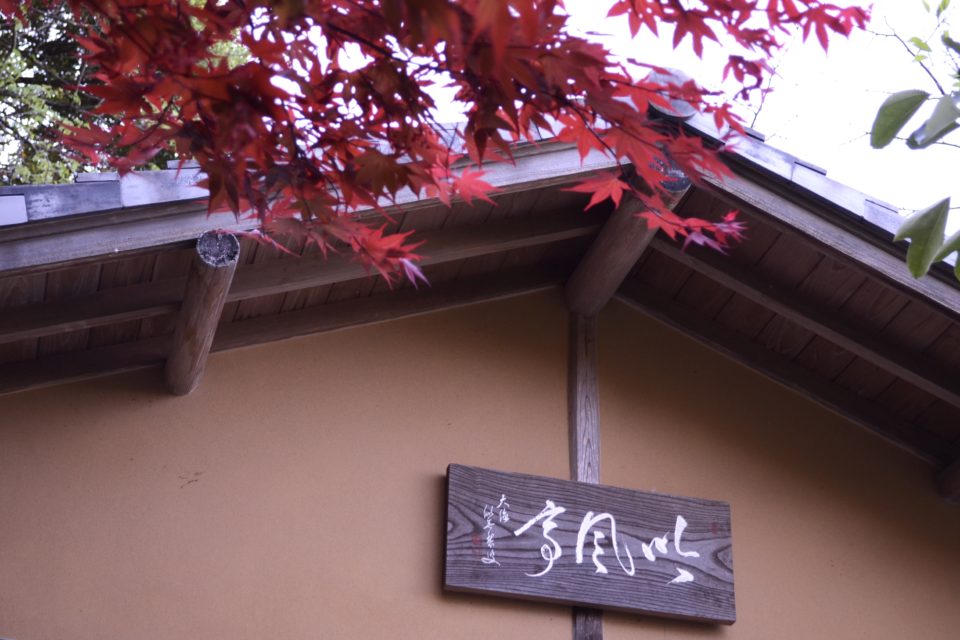
Japanese calligraphy sing.
Read form right to left.
茶室 吟風亭。和書の名札。右から左に読みます。
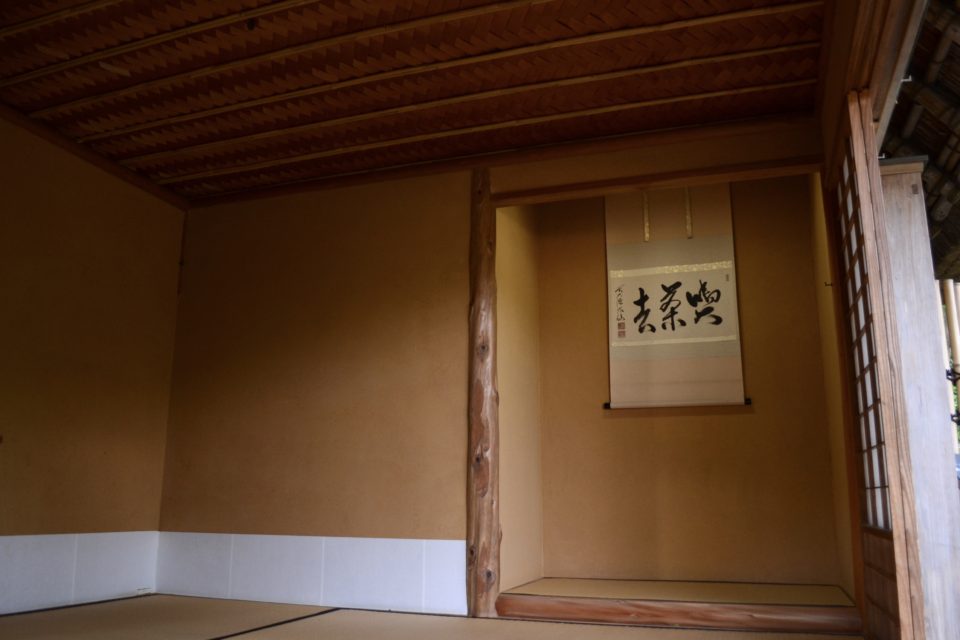
A hanging scroll is hang in “tokonoma”.
吟風亭内。
床の間には掛軸。
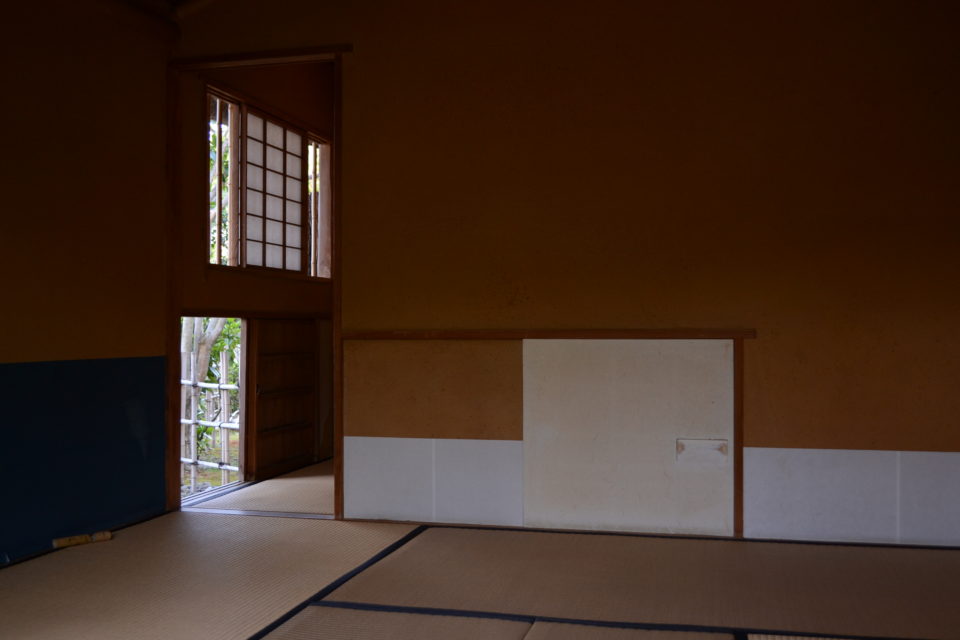
壁に貼られているのは和紙。
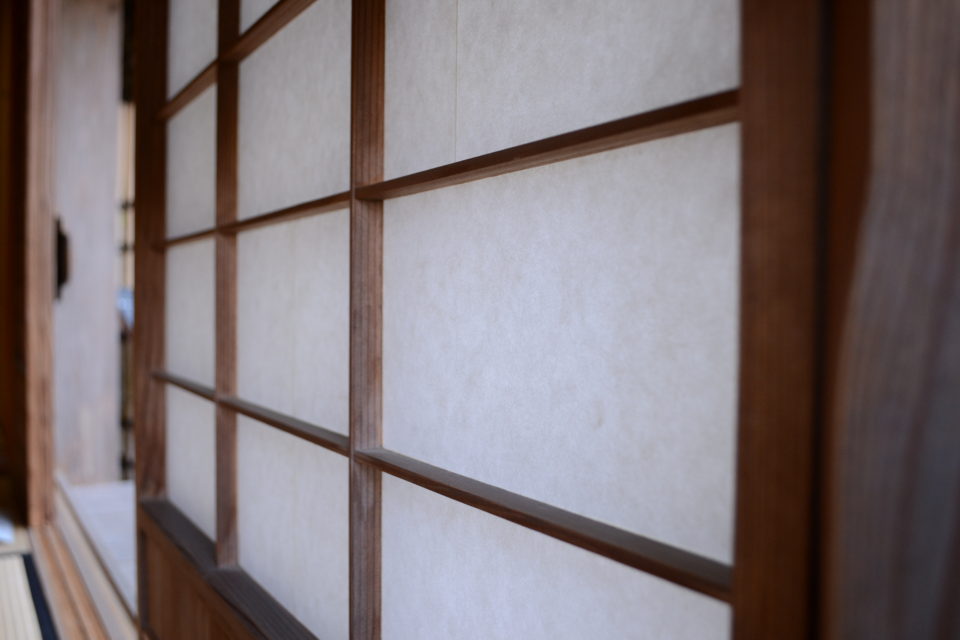
The sunlight is transparent.
木と紙でできた引き戸、障子。
陽の光が透けます。
Calligraphy is displayed in Japanese tea room.
What if you want to decorate Western calligraphy?
How should I make it a hanging scroll.
I’m thinking about that.
日本の茶室では書が掛けられています。
もし西洋カリグラフィーを飾るなら?
どのように掛軸にしたらいいのだろう?
そんなことを考えています。
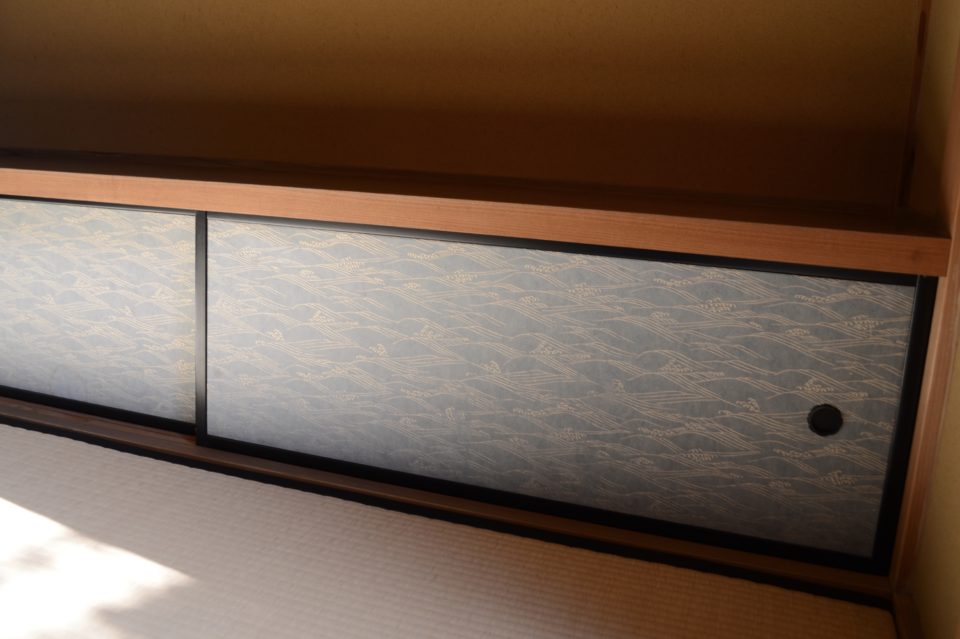
It has a sliding paper door.
Because the area is small, it is a beautiful blue that accents the interior.
地袋。紙の引き戸がついている。
面積が狭いので、内装のアクセントになるような綺麗な青でした。
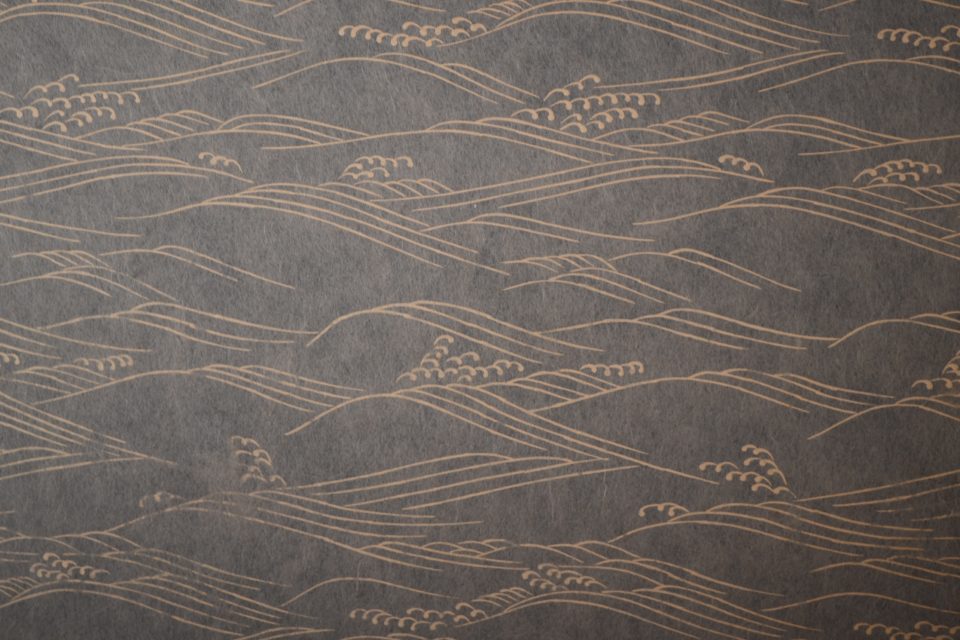
Is it because the sea is near here?
波の模様。ここは海が近いからでしょうか?
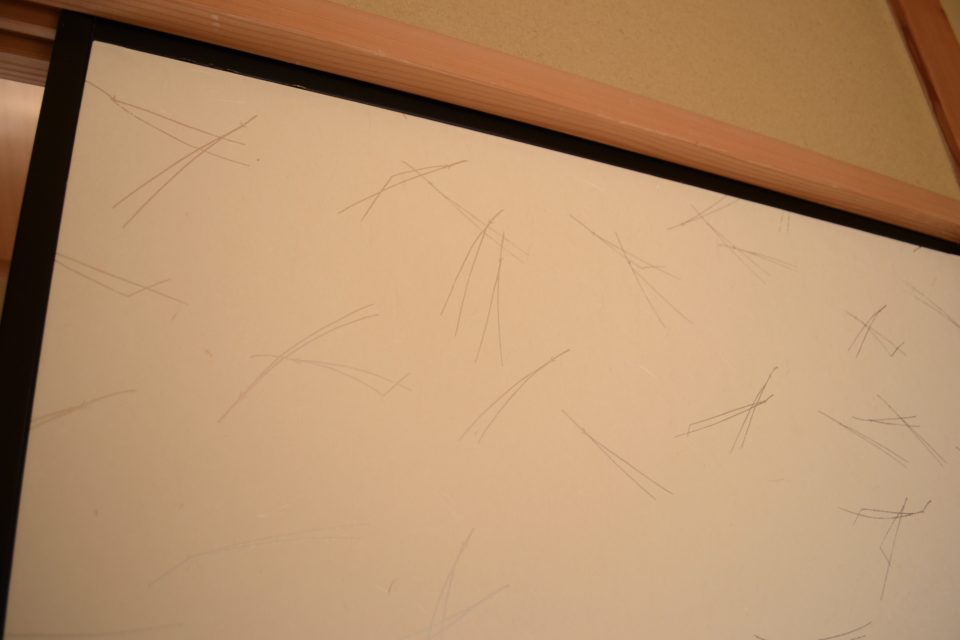
Pine leaf pattern.It also expresses the broken leaves.
これは襖。松葉模様。葉の折れも表現されています。
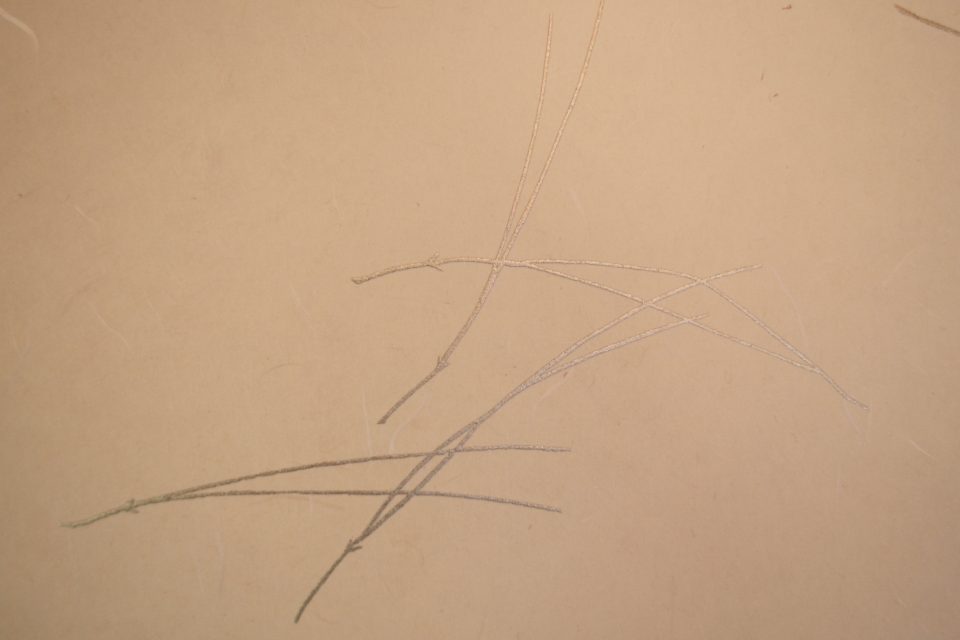
Since the area is large, it probably uses inconspicuous colors.
白地に銀色。面積が広いので目立たない色使いをしているのでしょう。
The paper used for fusuma is called “Karakami”.
There seems to be a “hyougusi” who makes this paper.
Use pigments and glue.
(Glue here too!!)
襖に使われている紙を唐紙と言います。
唐紙を作る表具師もいるようです。
これは顔料と膠を使います。
(ここでも糊が!!)
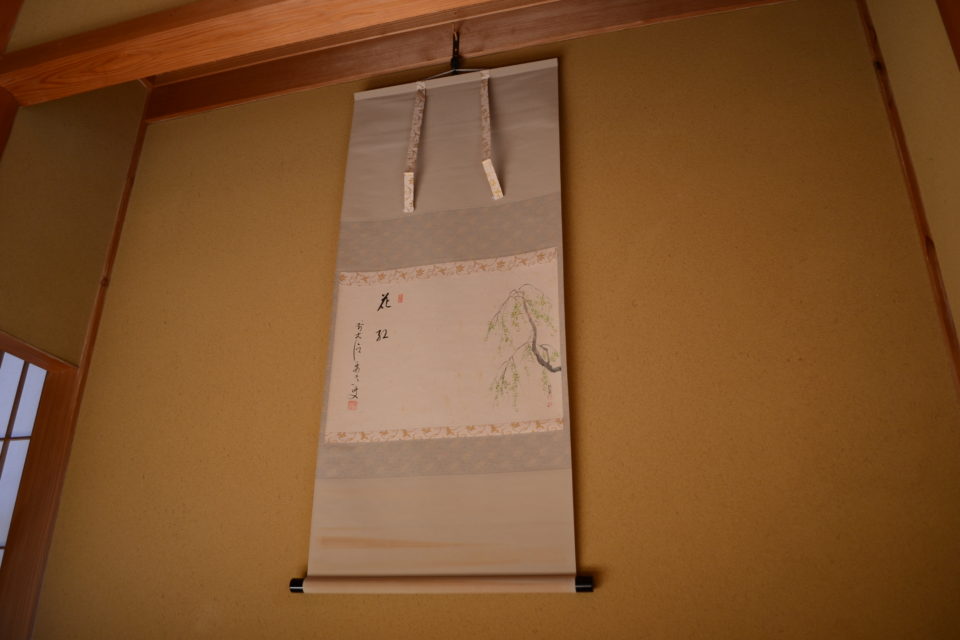
この掛軸は柳の絵のようです。
Not only calligraphy but also Japanese paintings are used as hanging scrolls.
The world of Japanese paper and glue seems to be deep.
I will continue to study.
I will keep a record here each time.
書だけでなく日本画も掛軸に用いられます。
日本の紙と糊の世界は深いようです。
勉強し続け、その都度記録をここに残すつもりです。
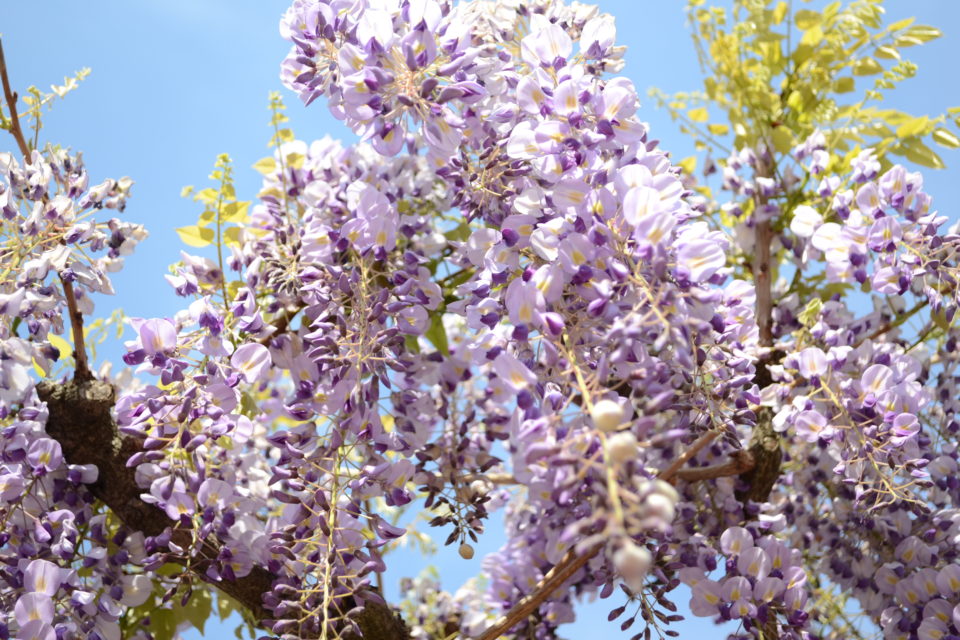
It seems that you can enjoy seasonal flowers here.
今回は藤が見頃でした。
季節ごとの花が楽しめるようです。



